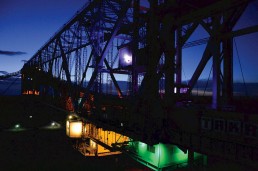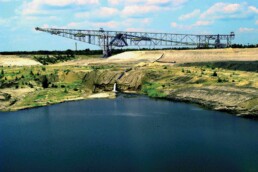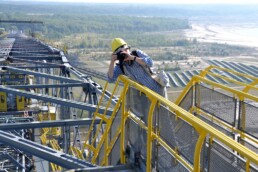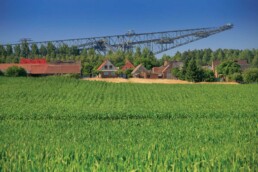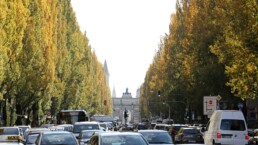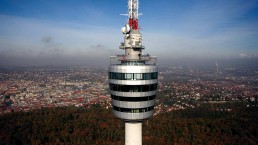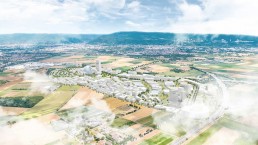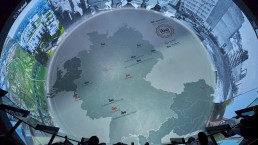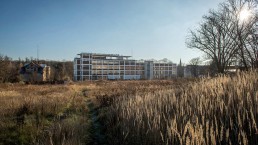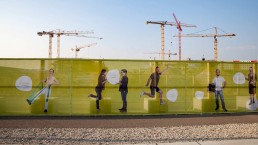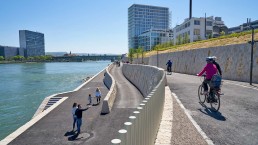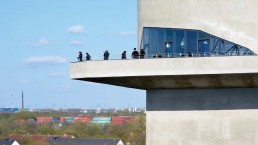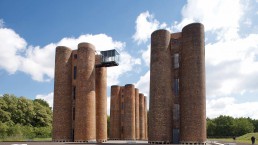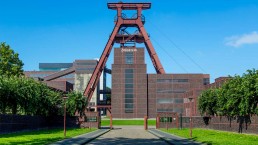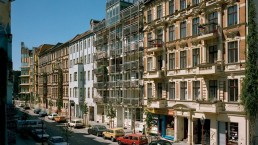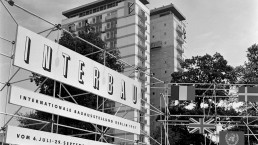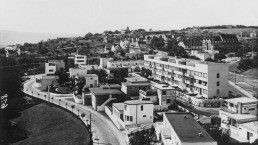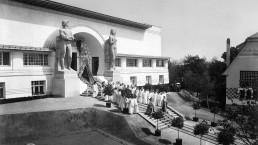F60 Visitors’ Mine
A “Horizontal Eiffel Tower” in Lusatia
The F60 spoil conveyor bridge in Lichterfeld near Finsterwalde is the biggest mining construction ever built. The technical masterpiece, 500 metres long and weighing 11,000 tonnes, was saved from blasting at the end of the 1990s. Today, the “Horizontal Eiffel Tower” is an exhibition mine and a tourist magnet of a very special kind.
Industrial culture contributes to preserving the industrial past and transferring it into the future. It also supports the development of a region, creates identity and gives it a new tourist profile. The F60 visitor mine is an impressive example of this. Thanks to a few enthusiasts who recognised the potential of the property, the bridge is still standing today after the Klettwitz-Nord open-cast mine was closed in 1992. The spoil conveyor bridge is not only a symbol for the region’s industrial history, but also an emblem of its structural change. Initially, the project had more opponents than supporters. The F60 project became a flagship of IBAIBA Internationale Bauausstellung see in 1998. Since then, the municipality of Lichterfeld-Schacksdorf has owned the bridge. It had a use concept developed for the “Horizontal Eiffel Tower”. By 2010 alone, well over half a million people had visited F60. In addition to guided tours of the bridge, it is also used as a venue for concerts and exhibitions. In addition, artist Hans Peter Kuhn enriched the bridge with a lighting installation, enhancing what was once the world’s largest mobile machine with metamorphic sounds of operating noise. F60 has become the hallmark for the region’s liberation from the destroyed mining landscape and its increasing (touristic) attractiveness.
AddressBergheider Straße 4, 03238 LichterfeldProject participantsOwner: Municipality of Lichterfeld-Schacksdorf), represented by the Kleine Elster Office
Technical planning: mediapool, Berlin
Operator: Förderverein Besucherbergwerk F60 e.V., Lichterfeld / F60 Concept GmbH
Light and sound installations: Hans Peter Kuhn (Berlin)Sources and further information:http://www.f60.de
http://www.iba-see2010.de
